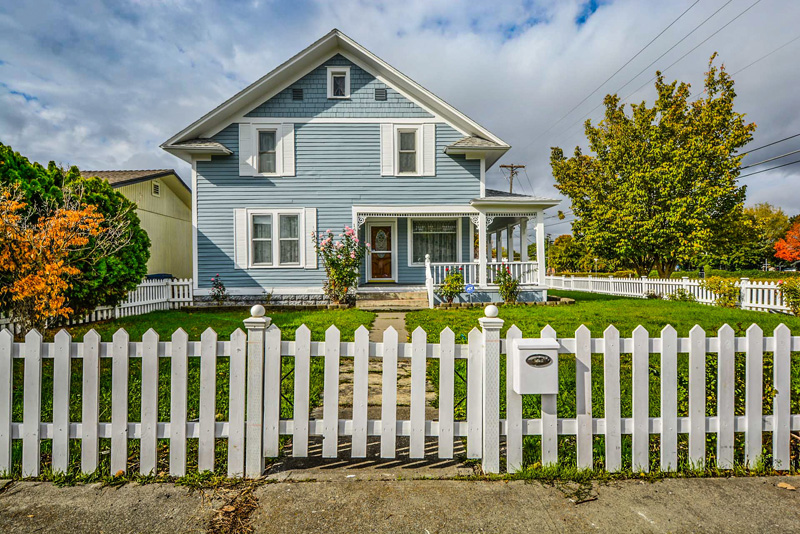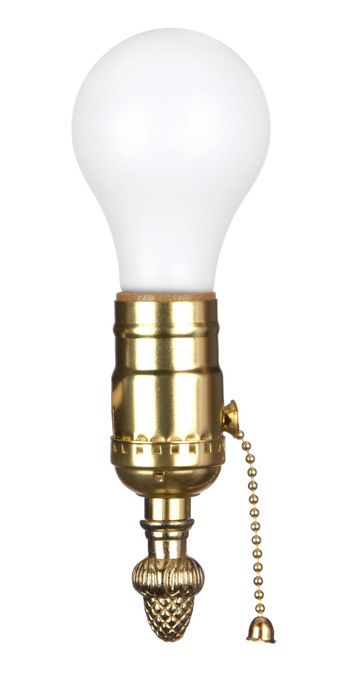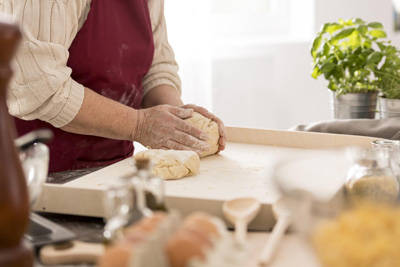Top 25 Tips for an AGE-LESS Home!

There’s No Place Like Home
If you’re like most Americans, you want to continue living in your home as long as possible. In fact, 91% of seniors between 65 and 74, and 95% of seniors who are 75+, reported that they would prefer to age in place for as long as they can.
Of course, as we age we can expect some potential physical or cognitive changes, and other limitations. And those could require slight modifications to make life easier.
As we change with age, why shouldn’t our house change right along with us?
The two biggest challenges:
- Keeping up with normal activities & tasks within the home.
- Avoiding falls.
At MyNotifi, we know a lot about falls and fall prevention. And the good news is that there are many simple things you can do to make your home a safer place to live well into your golden years.
 Let There Be Light
Let There Be Light
A good place to start is with lighting. As we age, the amount of light we need to see increases. So, let’s increase the amount of light we have in our house. It will make daily tasks easier, and help prevent injury-causing falls. Here are some good lighting ideas:
- 1. Night lights - Make sure there’s enough light to see if you get up during the night. Install motion-sensitive lighting or nightlights in your bedroom, in the hallway, and in the bathroom, kitchen, or wherever your midnight wandering takes you.
- 2. Light switches - Install light switches on both ends of your hallways and stairwells, be sure to use them.
- 3. More light switches - While you’re installing light switches, every room should have a light switch just inside the door, so you can turn the lights on before you enter the room.
- 4. Timers - A less expensive alternative is to purchase timers to turn lights on automatically before dark, so you never need to walk into a dark room.
- 5. Higher wattage - Increase the brightness of your lightbulbs, and add additional sources of light, to avoid glare and casting shadows.
- 6. Even lighting levels - As we age, it takes longer to adjust to lighting changes, and that adjustment time is when you’re at higher risk for accidents and falls, so try to keep your lighting levels as even as possible from one room to the next.
- 7. Entry lighting - Make sure there’s good lighting inside and outside of all your home’s entryways, so you can see where you’re stepping. This is another good place to install motion-sensor lights.
- 8. Work lighting - Install lights under your cabinets, to illuminate your work area. For that matter, lights at the backs of cabinets are helpful as well. Consider rope LED lights, which are fairly inexpensive and easy to install.
Cut Out the Clutter
One of the most effective home modifications is also the simplest and least expensive.
- 9. Declutter - Get rid of clutter in traffic areas of your home and on the stairs. Clutter is one of the biggest trip hazards, especially in low light.
- 10. Get rid of rugs - While you’re at it, pull up your throw rugs. It’s easy to trip on throw rugs, and it’s easy to slide on them, which throws people off balance. If you must have rugs, be sure they have a non-skid back, but be aware that just the change in surface textures from floor to rug can contribute to falls.
- 11. Remove tripwires - Remove any cables and wires in areas where people walk.
Bathroom Upgrades
Changes that have the highest impact on preventing falls and preserving quality of life are in the bathroom, with its many slippery surfaces. Some of these renovations are more expensive, and others are quite cheap.
- 12. Bath strips - Adhesive shower and bath strips for your tub or shower are a simple and effective way to help prevent falls.
- 13. Foot-scrubber - A suction-bottom foot scrubber is a wonderful little device that lets you wash the bottoms of your feet with both feet on the ground.
- 14. Bath stools - Safely sitting while bathing or showering is important when balance or leg strength is an issue.
- 15. Bath mat - A non-skid bath mat outside the tub is a must.
- 16. Eliminate steping up - Shower stalls and walk-in tubs make getting in and out easier. This is a more expensive renovation, but it might be the difference between staying in your home and needing to move to a more accessible place. Combined with a shower stool and a hand-held shower, it can be one of the most important renovations you can make to your home to make it suitable for aging in place.
- 17. Grab bars - Install sturdy grab bars by the toilet and tub, to help with balance when you’re getting up and down.
- 18. Other nice assists - To make your daily routines easier, put these handy tools in your bathroom: A reacher, a magnified mirror, a raised toilet seat, a jar gripper.
 Get Organized in the Kitchen
Get Organized in the Kitchen
The kitchen is the heart of many homes, and some of the simplest changes can be the most effective.
- 19. Rearrange the cabinets - Put the kitchen tools you use most at about waist-height, to avoid reaching or crouching to get the things you use every day. Put your heaviest appliances on the lowest shelves.
- 20. Lazy Susans - Instead of crouching down and reaching way back into deep cabinets to reach things, use a lazy Susan in deep cabinets, especially corner cabinets.
- 21. Step-stool - If you need a step-stool, make sure it’s sturdy, and that it has a handle or bar at the top for you to hold.
A Few More Suggestions
- 22. Lower the level of thresholds to eliminate a common tripping hazard.
- 23. Increase contrast between walls and floors, between door frames and doors, between furniture and floor, and on the edges of steps, to make the edges obvious, even in low light.
- 24. Fix or replace any wobbly railings, and add railings to both sides of your stairwells, including outdoor steps.
- 25. Make sure your outdoor sidewalks are even and in good repair, and remove snow, ice, or leaves.
Implementing these tips will help seniors stay safe in their homes, and also help seniors feel safe. That’s important for peace of mind, and also because the fear of falling has important consequences for seniors. When seniors fear falling, they avoid activities that they’re otherwise capable of doing. This limits people from leading the full and independent lives they want. And, when limiting their activities leads to increased muscle weakness, fear of falling can lead to an increased risk for injury-causing falls. Another smart way to help with the fear and the very real consequences of falling is MyNotifi. MyNotifi is a wrist-worn fall detection device, connected via Bluetooth to your smart phone. MyNotifi uses precise and accurate technology to detect if you’ve fallen. When it detects a fall, it asks for your input to determine whether you need help. If you respond yes, or don’t respond at all, your MyNotify device contacts your custom contact list of friends and family to let them know help may be needed. Find out more about MyNotifi. And then go ahead and give these home modification suggestions a try. Many of them are quite easy to do, and provide real quality of life improvements. It’s never too early to start thinking about fall prevention and detection, and to start making your home safer for yourself and for your loved ones.


Comments (0)
Write a comment
Rating: Bad Good
Enter the code in the box below: